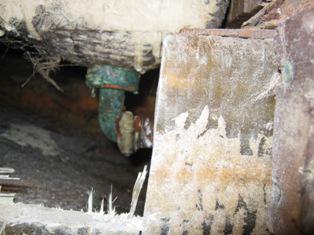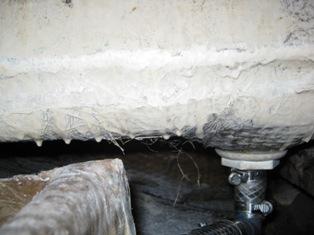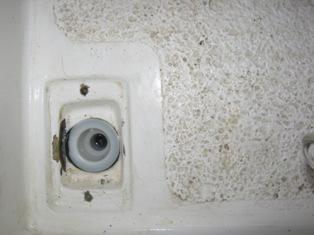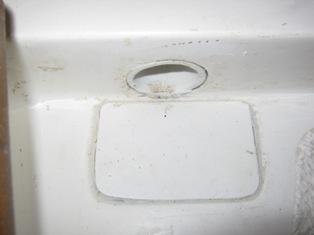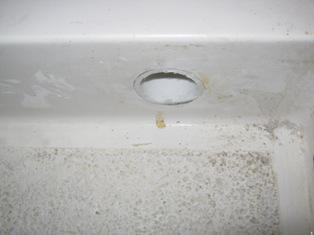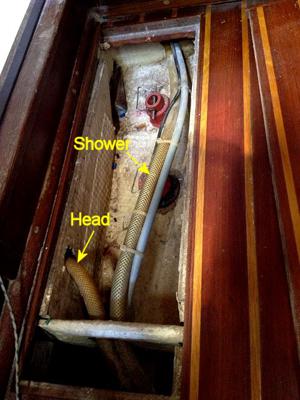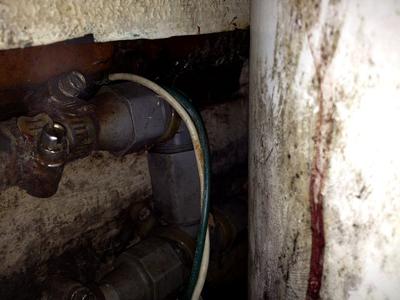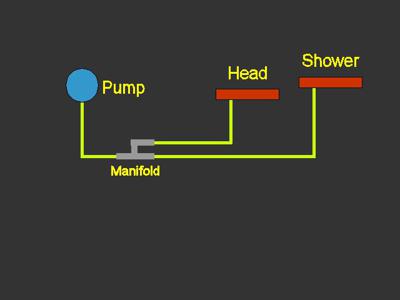jack_perlette
Jack Perlette
I'm wondering if anyone has had experience re-plumbing the shower/head sump if the hoses are no longer in place. The archives have discussions of pump replacement, but in every case it seems the hoses from the shower and head drains were still in place and usable. I know for sure that on my boat the hose is no longer connected to the deck drain in front of the toilet, and I can't see or find any hose from the drain in the shower.
The hose connection in front of the toilet goes straight down, and I can see there's nothing connected to it. The shower drain seems to have a 90 degree bend (aft, toward where a pump would be under the sink), so I can't tell where exactly it goes or whether a hose may still be on it. The area beneath the head compartment seems almost entirely inaccessible.
A previous owner drilled a couple of extra holes in the drain by the toilet and put a bilge pump down in the void just forward of the mast bucket. That makes me think the hoses are long gone.
Any suggestions will be appreciated.
The hose connection in front of the toilet goes straight down, and I can see there's nothing connected to it. The shower drain seems to have a 90 degree bend (aft, toward where a pump would be under the sink), so I can't tell where exactly it goes or whether a hose may still be on it. The area beneath the head compartment seems almost entirely inaccessible.
A previous owner drilled a couple of extra holes in the drain by the toilet and put a bilge pump down in the void just forward of the mast bucket. That makes me think the hoses are long gone.
Any suggestions will be appreciated.


